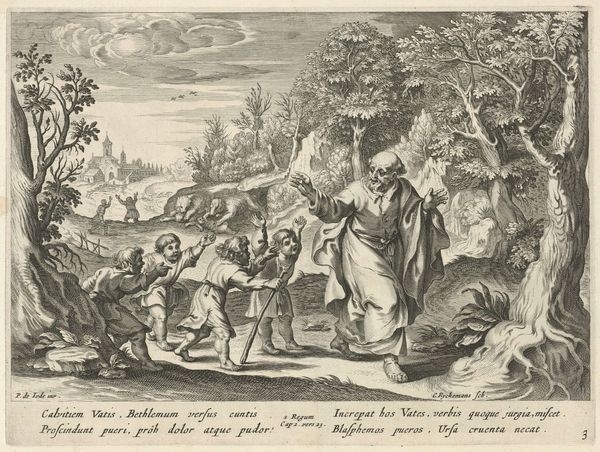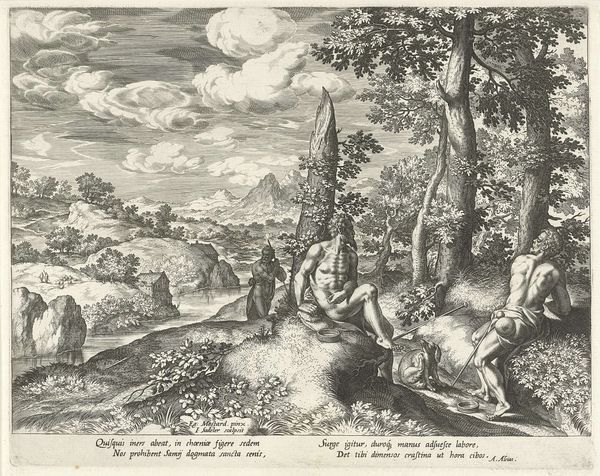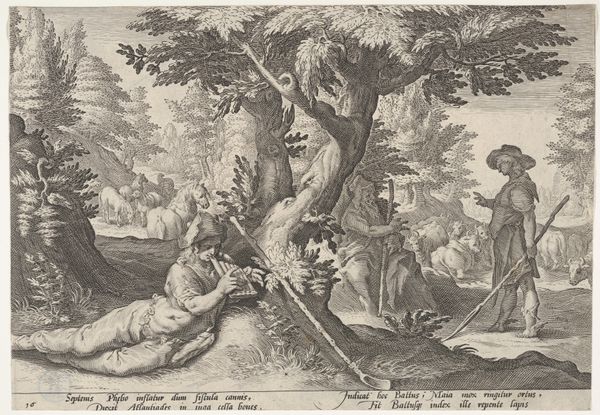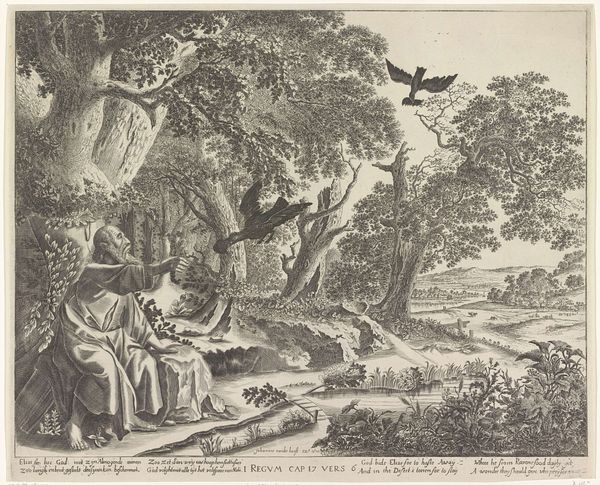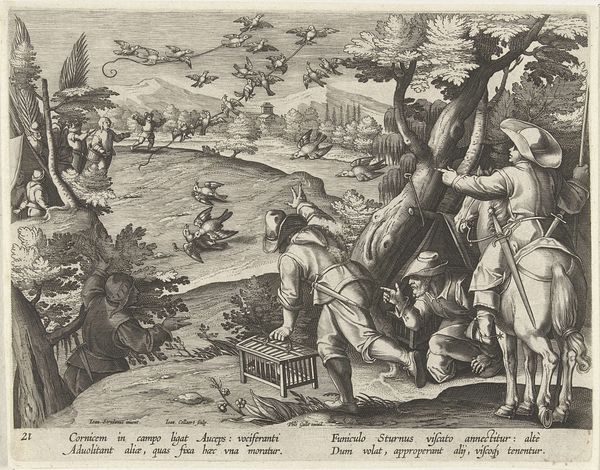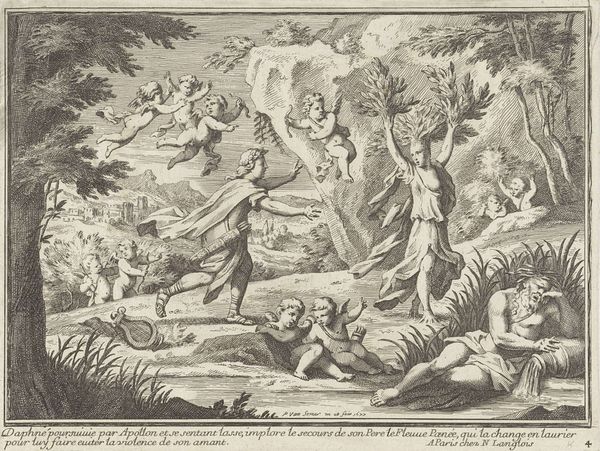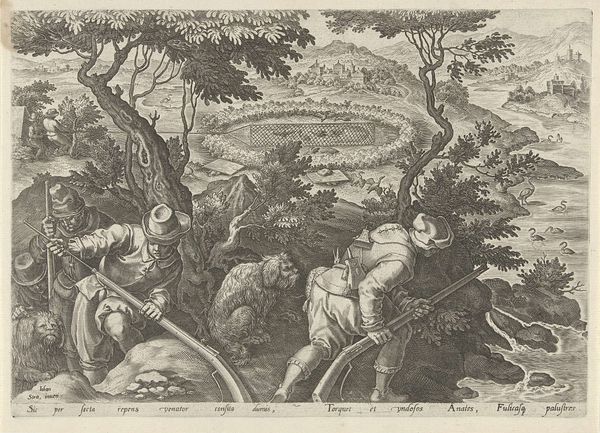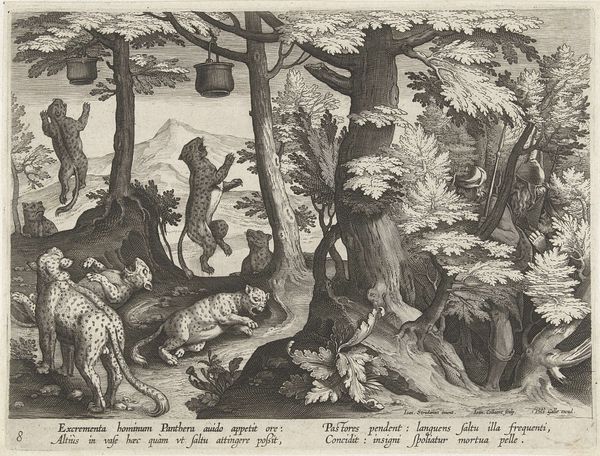
print, engraving
#
narrative-art
# print
#
old engraving style
#
landscape
#
mannerism
#
figuration
#
history-painting
#
engraving
Dimensions: height 199 mm, width 268 mm
Copyright: Rijks Museum: Open Domain
Curator: This is Jan Collaert the Younger’s "Hunter Trapped in a Pit," made between 1594 and 1598, an engraving currently housed at the Rijksmuseum. It is striking, isn’t it? My initial feeling is one of intense vulnerability and entrapment. Editor: Absolutely. The layering of the engraving – you can almost feel the density of the foliage, the earthiness of the pit itself. Consider the actual process: Collaert, most likely through an intermediary draftsman, took ink to paper to record or conceive this elaborate scenario of man undone. And what paper would he have used? Did he select it himself? Curator: I’m drawn more to the visual narrative, to how Collaert uses recognizable symbols. We have the obvious figures: the hunter fallen into the pit, being threatened by serpents – traditionally associated with danger, temptation, or even deception. Above, other hunters are desperately trying to pull him to safety. Editor: The landscape also merits our attention. It's hardly naturalistic. It feels composed, almost like a stage set, and yet that artifice is key. This mannerist artificiality highlights the constructed nature of the image itself. Collaert made many prints like this: the mass reproducibility allows these prints to disseminate ideas far and wide at this historical moment. It also democratized images! Curator: I find the classical ruins behind them fascinating. They speak to a history of collapse and decay. Could they symbolize the fragility of human endeavor? The hunter’s pride leading to his downfall? Editor: I wonder too, what sort of collaborative workshops were common for a prolific print-maker like Collaert. The scale of his practice begs questions of division of labor, of hierarchies of craft. Curator: It's a poignant reflection on the precariousness of life and how even the skilled can fall prey to unseen dangers. This piece carries significant emotional weight, the engraving captures both the physical struggle and psychological torment. Editor: Precisely. Looking closely at its creation allows us to reflect not only on its message but also on the means through which this image reached its audiences centuries ago.
Comments
No comments
Be the first to comment and join the conversation on the ultimate creative platform.
